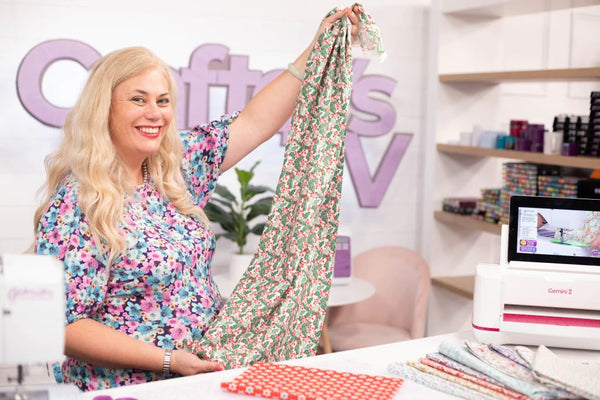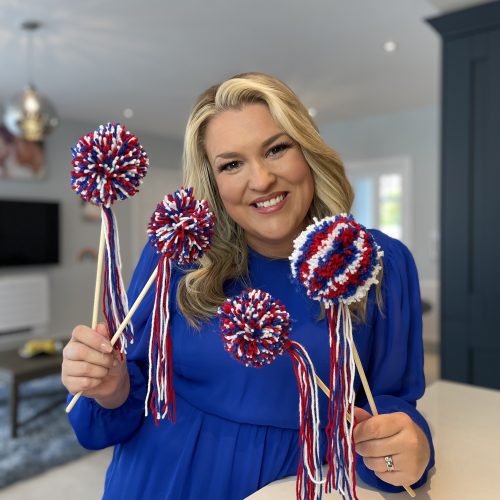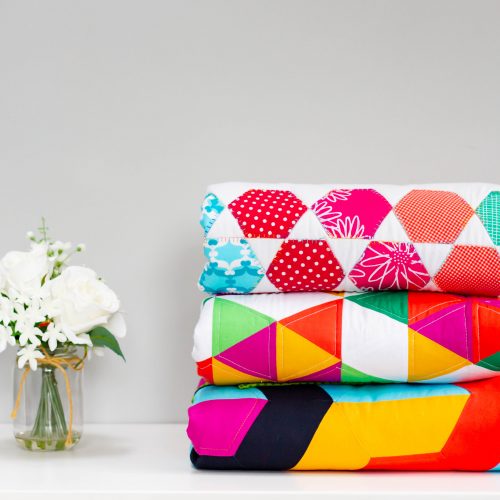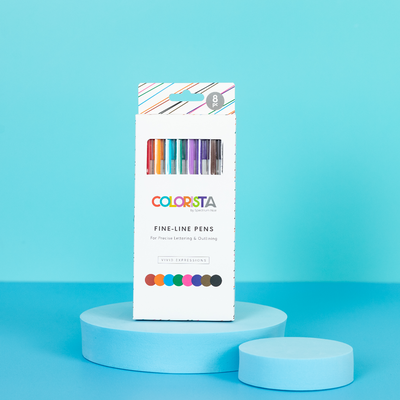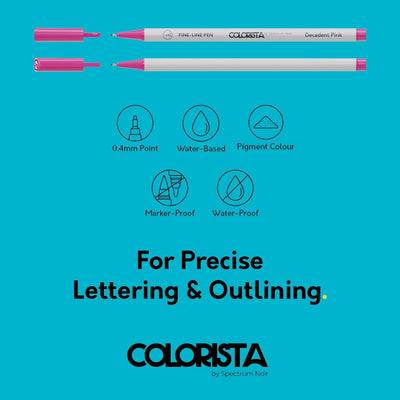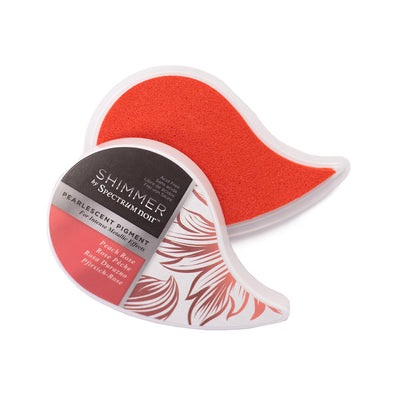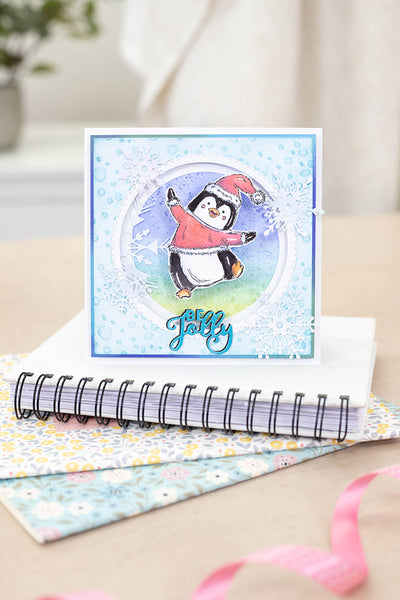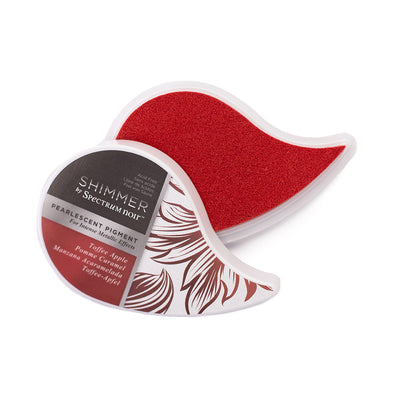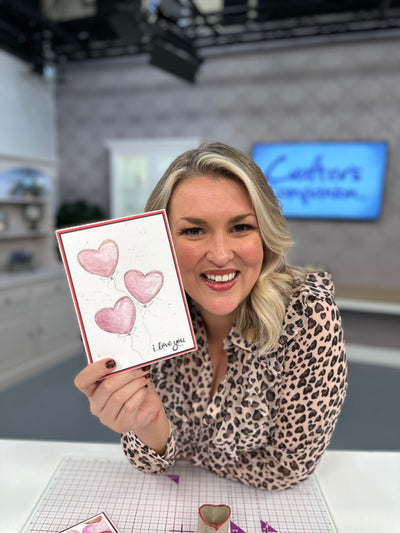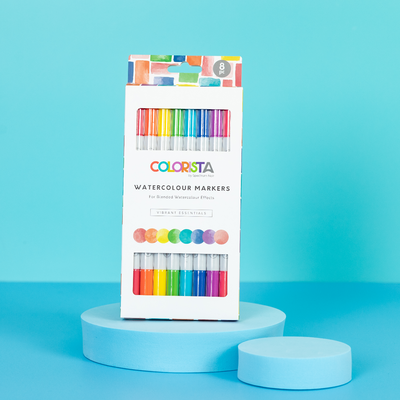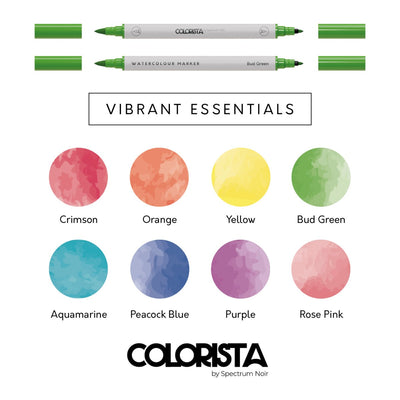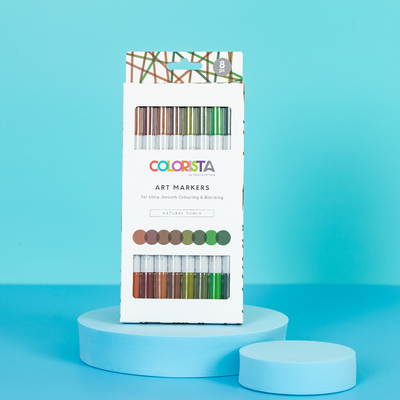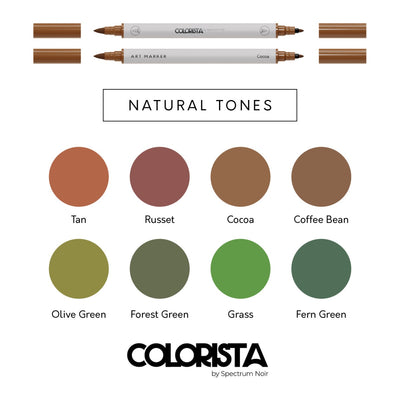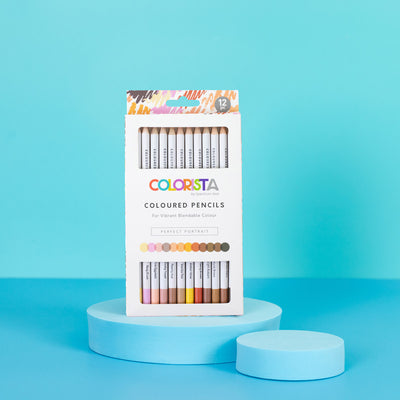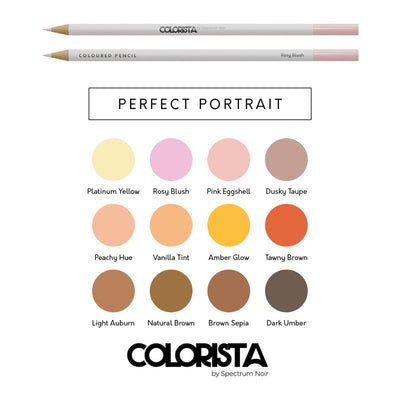Learn more about Sewing and Needlecraft
- Read time: 14 minutes
- Written by: Crafters
There’s a reason that the art of sewing and needlecraft has lasted and been loved by crafters all across the world for so long. Taking the time to stitch a beautiful quilt, cushion, wall hanging or bag, whether it’s to keep or give as a gift, is special.
There are many different sewing and needlecraft techniques to choose from – and for beginners getting started can seem daunting at first. But that’s where we come in!
In this post we’ll take you through a range of different sewing techniques from patchwork and quilting to embroidery, bag making and crochet. We’ll show you the basics of each craft and lay out the tools you need to get started. So if you’re a sewing and needlecraft beginner, all you need to do is choose your favourite and start stitching!

Bag Making
Bag Making is a fantastic and versatile way to get started in the world of sewing and needlecraft. Making a customised bag for a friend, or yourself is a simple and straightforward process for sewing beginners- especially if you use Gemini Bag Making Dies!

Bag Making Tips and Techniques
- Choose your fabrics, fastenings and bag hardware such as handles carefully so every element complements each other
- Use Gemini Bag Making die sets to cut each panel with precision using a die cutting machine, ready to be stitched together into your very own bag
- You may need to place wadding or batting in between two layers of fabric to create a more sturdy, quilted effect
- Use the Bag Cutting dies to cut extra panels to form the lining of your bag for a professional finish
- Gemini Bag Making Dies can cut through a range of materials including leather, denim and glitter fabrics so you can experiment with all kinds of bag designs!

Essential Bag Making Tools
- Bag Making Dies: These are ideal for anyone new to sewing as there is no need to cut a paper pattern, simply follow our step-by-step instructions to cut out all the panels using a Gemini Die Cutting Machine!
- Bag Templates & Stencils: Threaders Sewing Templates offer amazing accuracy and precision and with included seam allowances they’re so easy to use!
- Wadding & Interfacing: Essential materials to add padding to your bag designs
- Frames & Handles: Choose the perfect frame and handle in a range of styles and sizes to create your perfect personalised bag design
- Fastenings & Hardware: Finish off your bags in style with everything from clasps, snap buttons, D rings and more

Patchwork
Patchwork is a centuries-old technique used to create beautiful designs from different shapes and sizes of fabric in a range of colours.
With patchwork you sew pieces of fabric together to form blocks, panels or quilt tops. You can use a range of different designs, textures and colours t o make your patchwork block – so it’s a great way to let your creativity loose!

Patchwork Tips and Techniques
While patchwork is all about experimenting and creating from your imagination, there are three structures that patchworkers tend to follow:
- Blocks – patchwork blocks are squares that are pieced together from repeating shapes that create patterns within the square. Some of the most common blocks include Log Cabin, Drunkard’s Path, Tulip and Nine Patch. The blocks are usually stitched together with contrasting fabric in between to separate them and form an interesting finish.
- Overall – overall patchwork designs are characterised by pieced geometric shapes that are stitched together to form a larger project that can be random or composed. Some of the more popular designs are Clamshell, Starburst and Needle Weave.
- Strip piecing – this structure involves stitching pieces of fabric together in repeating patterns and long strips, then stitching the strips together lengthwise. The patchwork strips can be alternated with strips of contrasting colour, which would heighten the design. A typical pattern is Four Patch

Patchwork Tools
To ensure the final patchwork block is accurate the pieces need to be cut to a precise size. But don’t worry there are some clever tools to take the hard work out of measuring so you can enjoy patchwork perfection!
- Build-a-Block Patchwork System – this is a set of dies that has been designed to help you create all the elements you could need for your patchwork blocks. All you need to do is sandwich your dies and your fabric between your cutting plates, and roll them through a die-cutting machine for precise shapes.
- Patchwork Dies – as well as Build-a-Block, we have an assortment of individual Patchwork Dies to help you achieve shapes. They’re great for taking all of the effort from measuring and cutting!
- Spray Adhesives – we have specially formulated spray adhesives that are ideal for fusing fabrics together or temporarily sticking patterns to fabric. They would be highly useful for patchwork, so take a look

Quilting
Quilting is a way to create a cosy padded quilt, table runner or bag by sewing two or more layers of fabric and padding together. The quilt top is the decorated layer, followed by batting or insulating material and finally backing material.

Quilting Tips and Techniques
- Measure twice, cut once – don’t waste any of your precious fabric. Make sure you measure and measure again, then cut once you’re confident.
- Always pre-wash your fabric, unless the fabric care instructions say otherwise – washing helps to remove any chemicals from your fabric and prevent colour bleeding
- Start simply. Choose an easy pattern to get started – perhaps one that allows you to master a few beginner techniques
- Always use a consistent seam allowance – to make sure that all of your quilted blocks are the same size, a consistent seam allowance is a must. A 1/4″ seam allowance is the usual recommendation and by following that rule, your blocks should be perfect.

Quilting Tools
- Quilting Pattern Guides – these versatile guides are ideal for both beginners and experts, and offer you the chance to create incredibly detailed designs to take your quilting to the next level. These guides are created from 3mm thick acrylic and allow all quilters to expand their creativity by stitching stunning designs following along with the shapes
- Build-a-Block Patchwork System – this is a set of dies that has been designed to help you create all the elements you could need for your patchwork blocks. All you need to do is sandwich your dies and your fabric between your cutting plates, and roll them through a die-cutting machine for precise shapes.
- Build-a-Block Curves – this is the sister set of dies to the original Build-a-Block and it has been designed to help you cut our accurate curve shapes for your patchwork projects. Curves are notoriously difficult to cut, so this system is ideal for beginners.
- Fabric clips – while pins are good, fabric clips are much better suited to beginners. They can hold multiple layers of fabric together at once and can be sewn over very easily!

Appliqué
Appliqué is a way of applying shapes or designs on top of a fabric background to create a decorative motif or design.
It’s a fun and accessible craft technique – you can go as big or as small scale as you like. Which means you don’t necessarily need a sewing machine to get started!

Appliqué Tips and Techniques
- Use Gemini Multi Craft Appliqué Dies. These sets use a Gemini Die Cutting Machines to create different elements to create a range of appliqué characters and designs!
- Felt is a great fabric to use when creating an appliqué project – sturdy but soft and easy to layer – and it comes in a kaleidoscope of colours!
- Multi Craft Dies work with a range of fabrics so you can experiment with cotton and even paper or card!
- Use pins to hold your appliqué layers in the correct position while securing them together
- Stitch your appliqué design together using a contrasting thread to add an extra decorative element

Appliqué Tools
- Gemini Multi Craft Appliqué Dies: Cut through a range of materials using the Gemini Die Cutting Machine to create all of your pieces in one pass – time saving and so easy to use!
- Collall Textile Glue: Stick your appliqué elements together with no stitching needed!
- Felt – this sturdy and soft fabric is available in so many colours – it’s the perfect way to turn your appliqué characters into cute hanging decorations

Embroidery
Originating from the French word ‘broderie’ meaning embellishment, embroidery has been around since ancient times. It is the craft using a needle to decorate fabric with thread or yarn and remains incredibly popular with crafters of all ages and levels of experience.

Embroidery Tips & Techniques
- If you’re an embroidery beginner, start out with a simple and straightforward design so you can focus on mastering the stitches and getting comfortable with a needle and thread
- Make sure you’re in a well lit space before you start – you need good lighting to see all that fine detail
- Remember to strip your embroidery thread – separating each strand from each other. You’ll usually stitch with one or two strands at a time according to the size of the stitch or level of detail

Embroidery Tools
- Embroidery Scissors: These scissors need to be small and sharp so you can snip tiny ends of thread without damaging the rest of your work
- Embroidery Needles: One of the most essential tools for this craft. An embroidery needle should have a sharp tip and a longer eye to hold threads of different weights
- Embroidery Cotton: Available in a huge range of shades, Threaders Embroidery Threads are made from 100% Egyptian cotton and come already stranded so you can get stitching straight away!
- Embroidery Hoop or Frame: Keep your fabric taut and your design in place so you can focus on neat stitches!
- Embroidery Kits: This is the perfect way to get started in embroidery! The Threaders range of Embroidery Kits each includes an embroidery hoop, neeld, threads, stitch guide and fabric with the design printed on. So all you have to do is open the box and get started!

Crochet
Another needlecraft technique with roots in France, Crochet comes from the French term for ‘little hook.’
This popular and colourful craft is the method of weaving wool or yarn to create fabric – ready to be turned into blankets, cushions, bags, toys and so much more!

Crochet Tips & Techniques
- Most crochet projects begin with a slip knot – once you master this simple technique you can get started
- The four foundation crochet stitches are: Chain, Single Crochet, Double Crochet and Slip Stitch. Once you’ve mastered these the world of crochet is your oyster!
- Use different crochet hooks according to the tension of your work – if it is too tight use a larger hook and if it is too loose use a smaller hook
- If you make a mistake – it’s always better to unravel your project, go back and correct it. It may be frustrating at the time but your finished piece will look so much better for it

Crochet Tools
- Crochet Hook: Different sizes will create different sized stitches so this Pony Easy Grip Crochet Hook Set is ideal for beginners as you have a whole host to choose from!
- Yarn: Choose from a variety of colours and weights according to your project
- Crochet Kits: With a crochet hook, yarn, filling, tools and instructions – a Crochet Kit is a great way to get started in the craft, and create a cute stuffed toy!

Essential Sewing and Needlecraft Tools and Materials
- Scissors: Always use dressmaking shears for fabric, but don’t use them for anything else, otherwise they’ll become blunt. Use small embroidery scissors or snips for cutting curves or trimming threads. Pinking shears stop woven material from fraying and help to add a decorative edge.
- Fabrics: Building up your fabric stash is a huge part of the fun! But make sure that you choose the best quality fabrics possible, so that your sewing and needlecraft projects can be as professional as possible.
- A sewing machine: While it is possible to complete small softcraft projects by hand, we recommend picking up an entry level machine that will help you to create quilts much more accurately and quickly.
- Threads: Try to use the same fibre content as your fabric, so pair cotton fabrics to cotton threads, poly with poly and so on, but don’t get too hung up about it! As with your fabric, choose the best quality that you can.
- A rotary cutter: While scissors are great for smaller pieces of fabric, you should use a rotary cutter to slice your way through larger fabrics. A good rotary cutter will also help you to achieve cleaner cut edges and slice through a good few layers of fabric.
- A cutting mat : A good quality cutting mat is absolutely essential if you’re using a rotary cutter. It will help you to protect your work surface from becoming damaged and provide you with measuring lines for accuracy.
If this post has encouraged you to try sewing and needlecraft, we’d love to see your finished projects on social media. Share your photos with us on Facebook, Twitter or Instagram using the hashtag #crafterscompanion
